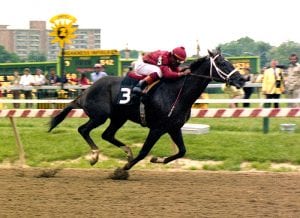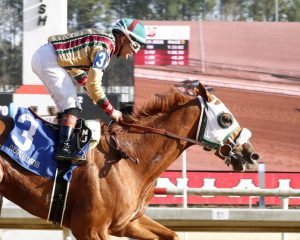Off the Pace: Triple Crown schedule just fine
With the announcement that Rich Strike will skip the Preakness the debate as to whether the Triple Crown gauntlet of three races in five weeks is too tough for today’s thoroughbred, has been reignited.
Recency bias is, says Charles Schwab investment management, “the tendency to place too much emphasis on experiences that are freshest in your memory.”

Remember: Rich Strike’s defection is the first one by a healthy Derby winner since 1985 when Spend a Buck chose to run at Garden State in pursuit of a two-million dollar bonus. And he’s the first Derby winner to skip the Preakness with the intention of awaiting the Belmont since Gato Del Sol in 1982.
My friend Frank Vespe argues that it’s time to change the series and lengthen the time between races.
Here’s why he’s wrong. Here’s why we should keep the Triple Crown as is.
Why love the Triple Crown the way it is? Let me count the ways.
More from Off the Pace

Off the Pace: My unforgettable first Preakness
In a new Off the Pace: A filly favored. A controversy for the ages. A drunk knocks himself out. Mike Valiante will never forget his first Preakness.
POINT
The Triple Crown configuration is just fine, Mike Valiante argues here. The series works fine, and changing it runs the risk of diminishing, rather than increasing, interest in the sport.
COUNTERPOINT
With changes in training and racing regimens, the Triple Crown series is an anachronism, Frank Vespe responds, and lengthening it could benefit the series itself and racing as a whole.
1. For those who say the Triple Crown schedule is too hard, allow me to quote Jimmy Dugan (Tom Hanks) from the movie A League of Their Own. “It’s supposed to be hard. If it wasn’t hard everyone would do it,” he said. “The hard is what makes it great.”
2. For those who say spacing the Triple Crown races over a longer time frame and/or shifting the order of the races would create greater interest, I challenge you to name the winners of the three races in 2020 when Covid led to that type of scheduling.
3. There would be an unintended detrimental impact on the other major races for three-year-olds if the Triple Crown schedule extended into the summer and/or fall months. Think of the havoc this would cause to the Haskell and Travers in particular.
4. If an owner feels his horse cannot take the rigors over a five-week period, they have the option of skipping a race. Despite the disappointment of fans and bettors, Rick Dawson should be praised for putting his horse first.

Nik Juarez looks to pin down Derby dreams
Wrestler-turned-jockey Nik Juarez, a long way from his rebellious youth in Maryland, is expected to ride American Promise in the Kentucky Derby.
With all that said, there could be some discussion about incentives in terms of getting horses to run in both the Derby and the Preakness. This would help capitalize on any rivalry between them that may have been established in The Derby when many sports fans are watching. A financial bonus would seem logical.
As an extra benefit of competing in both races, perhaps post positions for the Preakness could be chosen by those that finished the Derby with the highest finisher given first choice and the others following in their order of finish. New entries would then be entered into a draw for the remaining posts.
If you really wanted to get some outside-the-box thinking, perhaps a small weight allowance in the Preakness could be granted to those horses that competed in the Kentucky Derby.
At the end of the day this year’s Preakness will likely turn out to be a memorable race, with or without the Derby winner.
LATEST NEWS














